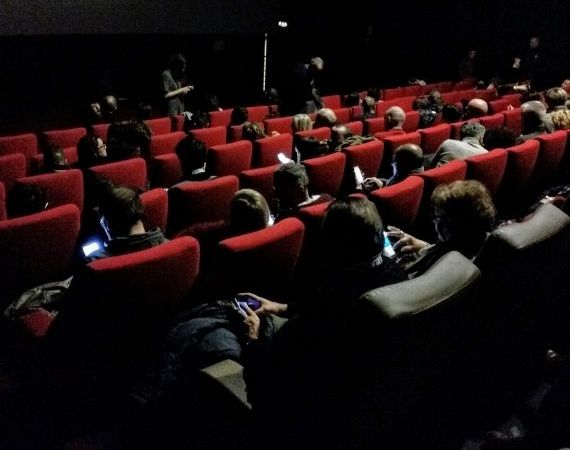Lunchtime talk write-up
Posted on Tue 25 Jul 2017
Experimental psychology in Cinema using Mobile Technologies
What is attention to media, and how it can be measured with reference to theory and experiments? This talk Steve Hinda discussed how attention, immersion and engagement can be studied within the cinema, using mobile technologies.Five Things I Learned1. Dr Stephen J. Hinde is a researcher studying…

What is attention to media, and how it can be measured with reference to theory and experiments? This talk Steve Hinda discussed how attention, immersion and engagement can be studied within the cinema, using mobile technologies.
Five Things I Learned
1. Dr Stephen J. Hinde is a researcher studying the experience of immersion while watching media, within the Bristol Vision Institute, University of Bristol. His doctoral thesis was entitled Attention While Watching Movies. He also has over 25 years of research and development experience in computer scientist. He held a senior research position at HP Labs, where he was one of the co-creaters of the iconic SE3D project with Watershed, and he was Architect at IBM AIX team in Austin, Texas. He is also poly-math, who is interested in the coincidence of the stream of attention, immersion, and film.
2. Stephen’s initial research question was ‘How does immersion work in Media Experience?’ in considering developments in media such as VR and augmented reality. He then went on to look at immersion in the environment of cinema. He suggests that it is similar to augmented reality where there is a mixture of senses that come together to create a different reality, both Cinema Social Sensory data (visual, audio …eg. Smell/taste of popcorn, everyone laughing together) and the Medial Space Data of ‘being transported into another world like in the Wizard of Oz’, literally being absorbed into the world of the film.
3. Stephen gave a brief overview of the history of Psychocinematics; the first book being published in 1916 The Photoplay by Munsterberg and then after a long gap Hasson et al Neurocinematics in 2004 which was based a study of monitoring brain activity through MRI whilst participants watched The Good, the Bad and the Ugly by Leone. Stephen has also used this film in his studies along with 60 other films, included creating a shuffled version where the film in re-edited at random to see the effect of destroying the narrative flow.
4.Before developing more sophisticated methods involving developing an app, Stephen’s early experiments (apparently conceived in the pub) involved buying notepads from WHSmith, drawing lines on them and asking participants to mark on a scale of high to low at regular intervals how engaged they felt during the film. Stephen stressed the importance of the experiments being conducted in a real situation not in a lab. The first ‘real life’ experiments were held here at Watershed in 2010 in collaboration with Mark Cosgrove, comparing audiences during 2D and 3D screenings of Avatar.
5. Stephen has now developed an app Meliecinemalab (named after Georg Melies) ‘designed for conducting psychology studies on attention while people watch media, e.g. film, tv, or other forms. The dual-task activity plays audio tones that the user responds to by pressing buttons (either high-tone or low-tone). Reaction-times are accurately measured in milliseconds and recorded. The completed trial data is emailed as a csv file.’